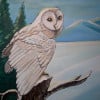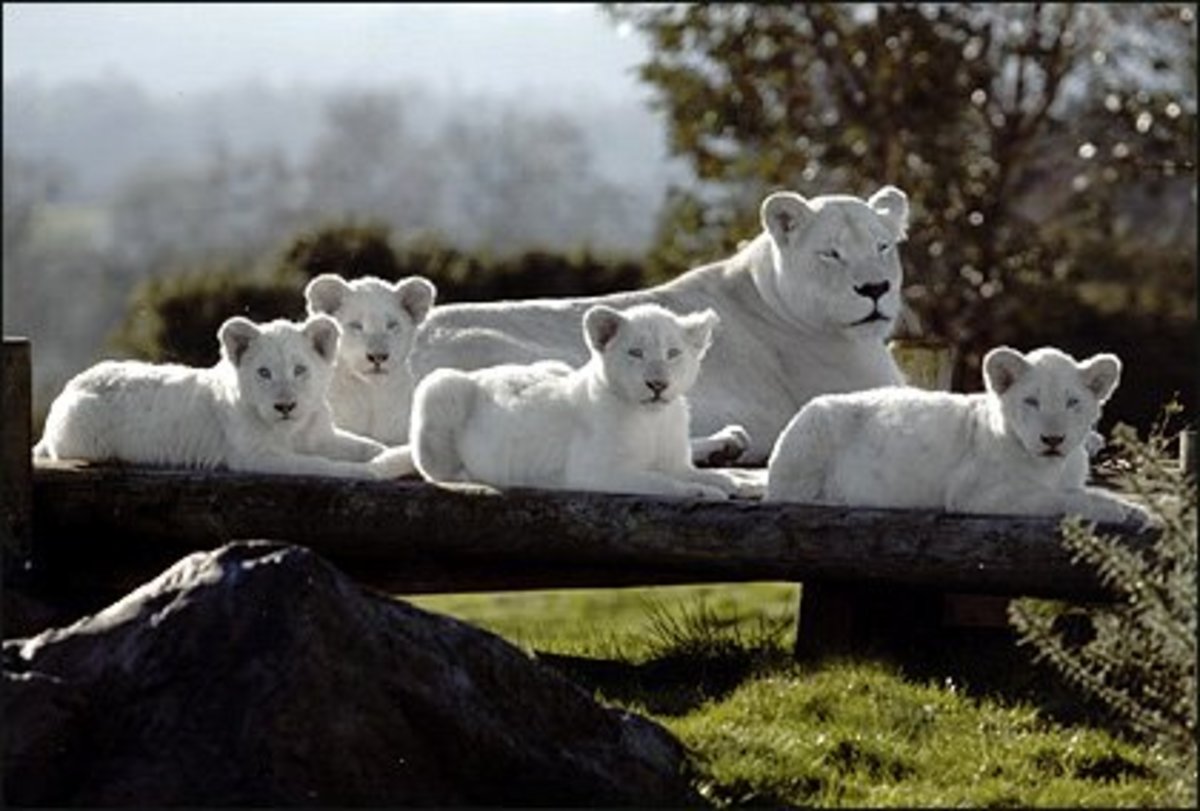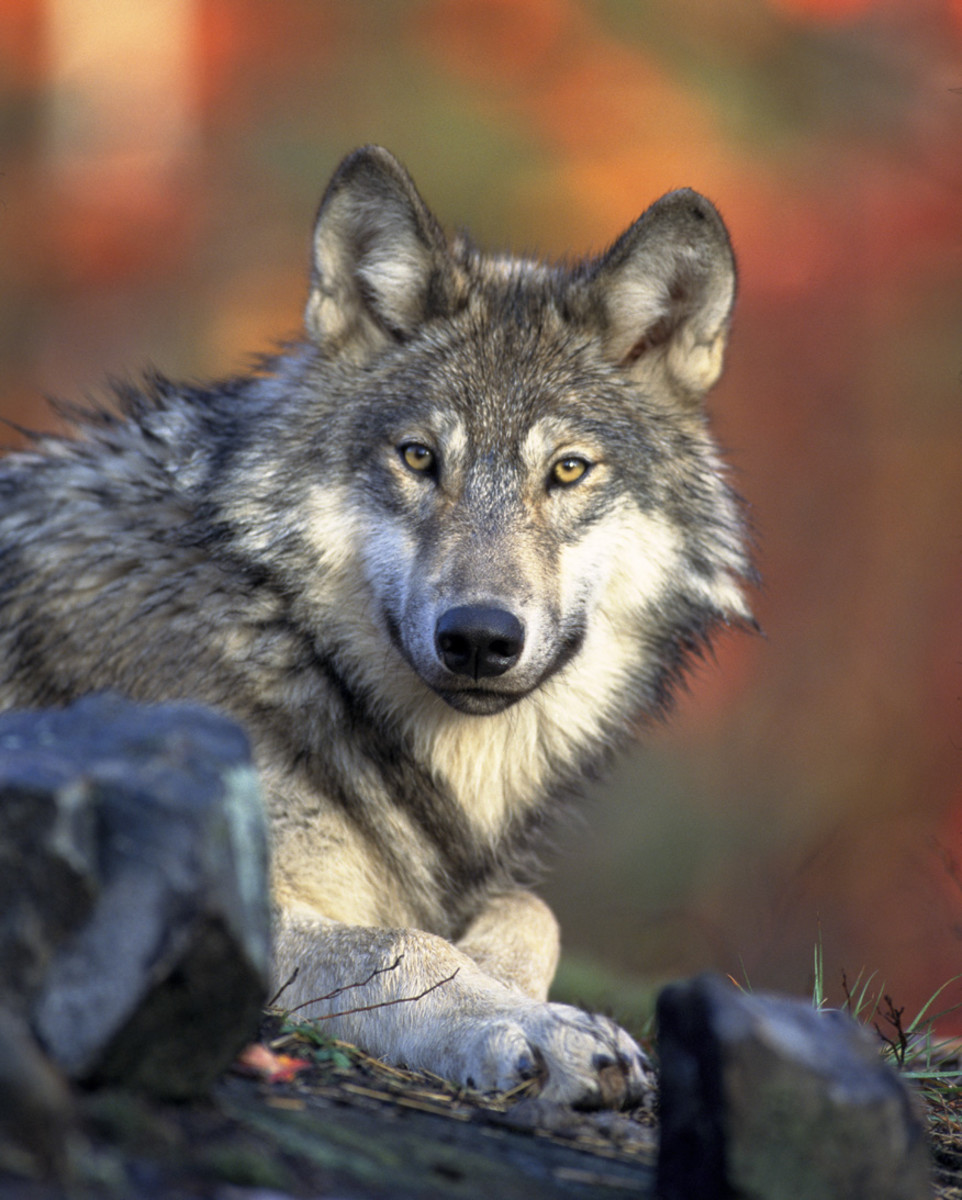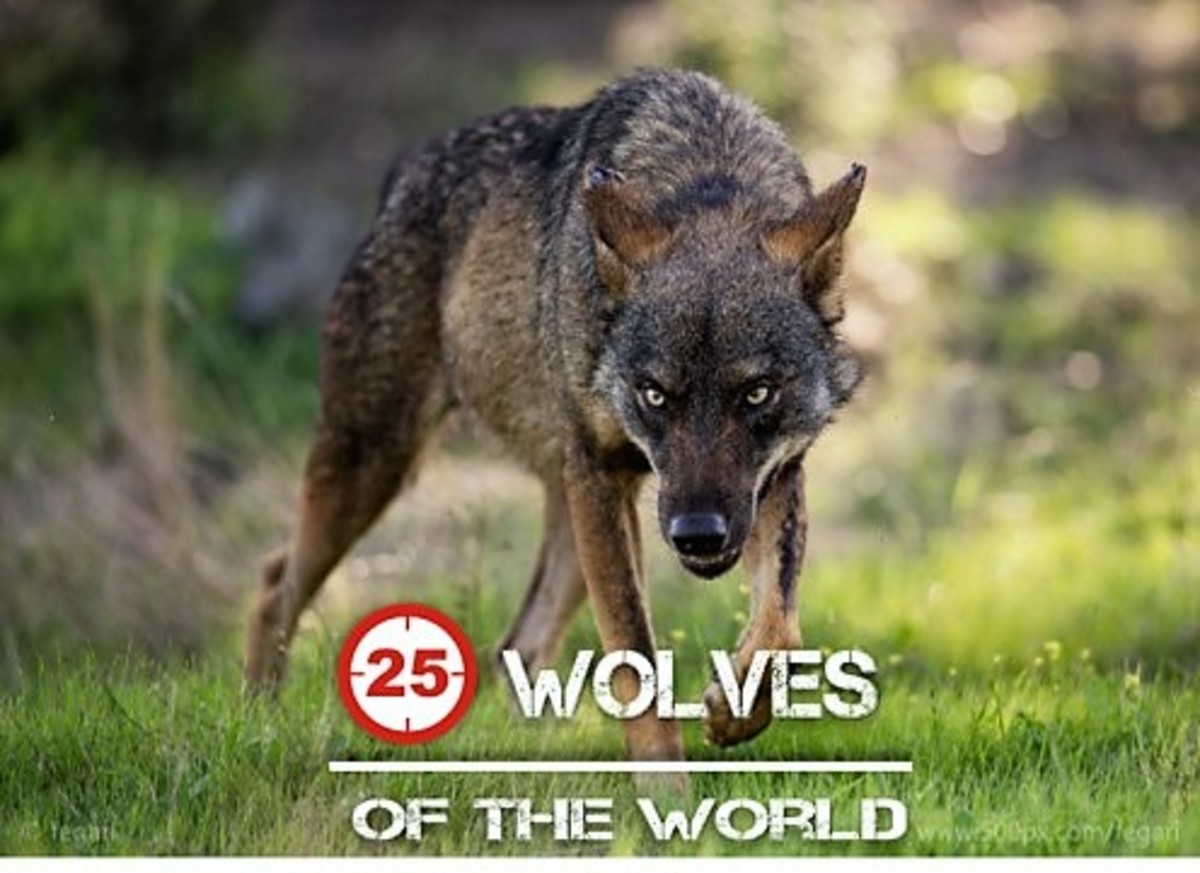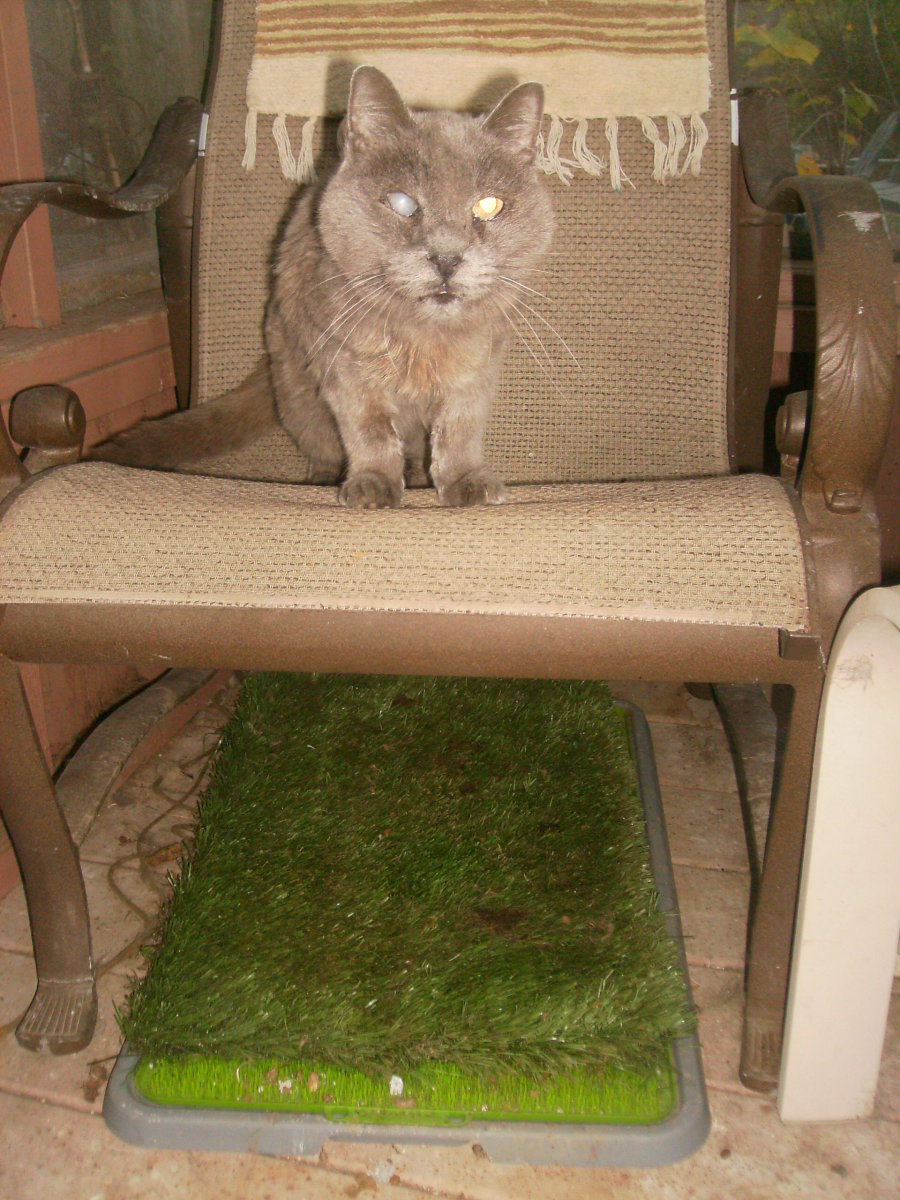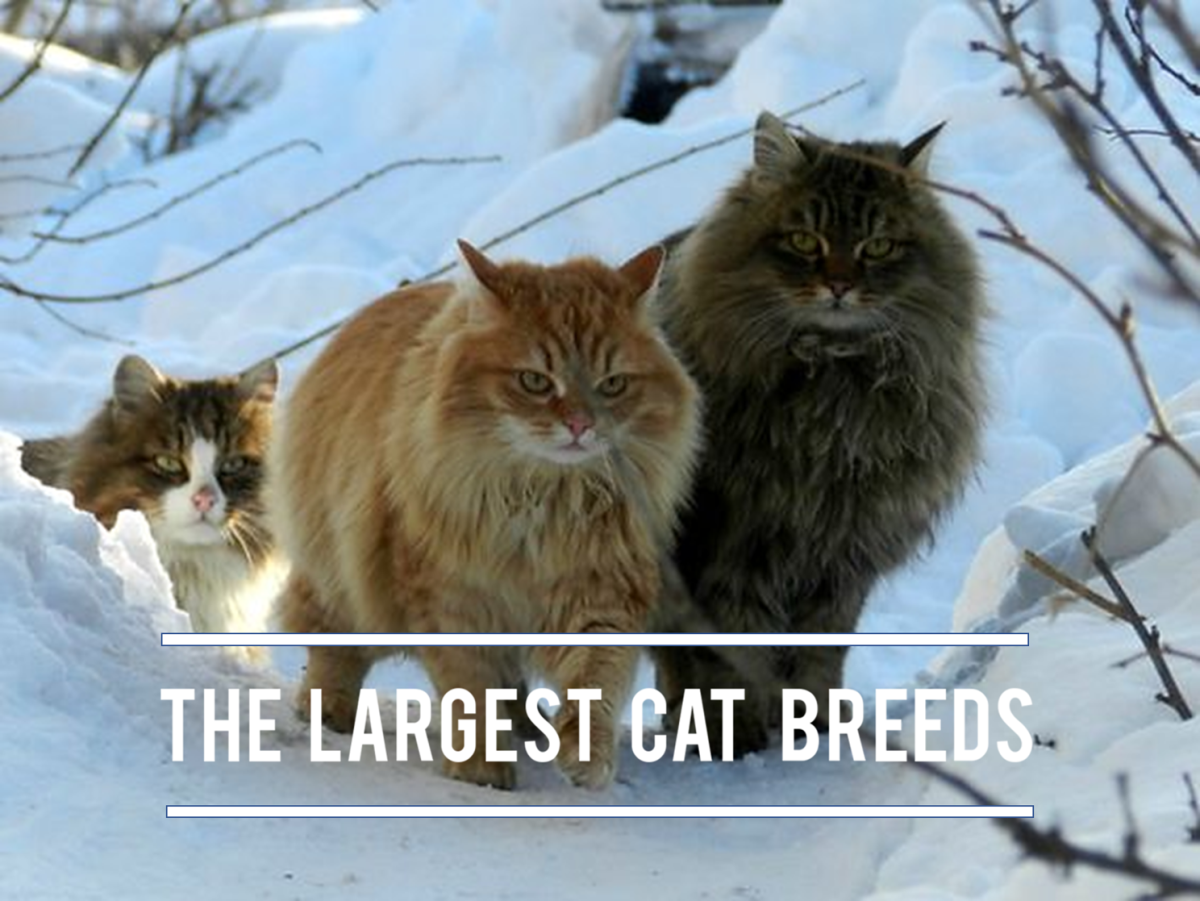The Wild Cats of the World
wild cat
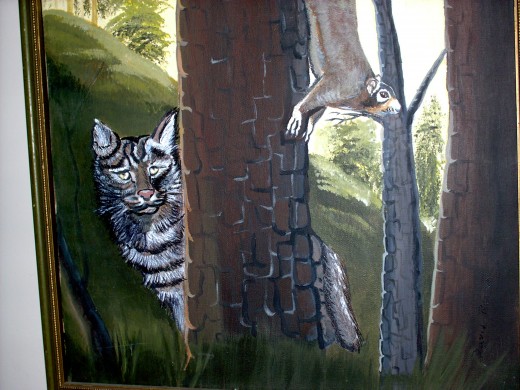
Cats of the Wild
There are are five main kinds of wild cats in the feline family that are native to North America. The Puma or Cougar, ( Mountain Lion), the Bob Cat, The Lynx, Ocelot, and the Jaguar.The Ocelot is a wild cat that is found from South America , Central America, Mexico, and to as far north as South Texas. It is small in size compared to most wild felines and weighs no more than 7-8 pounds on average and gets to a length of around 36 inches. The cat survives in feeding on lizards, snakes, birds, and small mammals and is classified as a night feeder, or nocturnal and was once almost made extinct in people trying to harvest it for its beautiful fur coat which resembles that of a leopard, Some have been domesticated (in an attempt to be used as pets). Their numbers have decreased and they are not recovering as a cat species at present.In February, 2011, they were placed on the Endangered Species list.
The Puma or Cougar is a wild cat species found all over the Western states of North America from Texas to California and as far east as Georgia, Florida , Alabama, and Louisiana. It is a nocturnal feeder, but has often been observed feeding in daylight hours.It thrives in dessert, woodlands, and swampy regions of North America and is very wide range of choices of prey. It may weigh as much two-hundred pounds and attain a length to around nine feet from nose to tip of its tail. It is an aggressive eater and predator, and its food sources range from insects to the very large species of mammals also found in North America. Its food sources include deer, goats, elk, and Moose to smaller mammals and include insects. It is in South America and in the wild regions of Central America, and in Mexico, as well, and has a range of around three to four hundred miles. It is often confused with the Jaguar a larger species, usually dark or black in coloration. The Jaguar is found in Texas and further south in the countries of Mexico, Central America, and South America. Although similar to the puma, it is larger and may weigh as much as two to three hundred pounds. It attains a length of around ten feet from head to tail and is nocturnal in most of its feeding, preying upon larger mammals, and cattle as well. It has been a source of worry over its extinction due to its predation habits in cattle country and has been hunted for this and for its beautiful dark fur. The Bobcat, or "Wild Cat" as it has been called, is a smaller animal in size ranging from 2 to three feet in length and weighing around 20-30 pounds with a bobbed tail(thus its name) and is a feeder that ambushed its prey. It feeds on smaller rodents, insects, rabbits, and even deer. It feeds in a diverse time span, but prefers early day time and evening hours and has been observed feeding through most hours of the day and night. It is grey or light brown in color and its ears have distinct black tips and tufts of black usually in its entire body, including distinct spots. The cat, like most predators, marks its territory with urine. It usually has only one mate and liters may include 4 kittens on average. It is found from Florida to Canada and in Western regions of North America. The Canadian Lynx is a larger cat species and is found mainly in Canadian territory or further south into the United States northern most regions. It lives in more colder climates during the winter months and has adapted to this well, having no listing as on an endangered species roles,it is listed as a threatened species. When it breeds, the female average four kittens. It is very similar to Bobcats in feeding habits and its size is generally larger. It may weigh as much as thirty pounds and be three to four feet in length. Its coloration is usually grayish and white, and some have been seen to be almost black. It has distinct whiskers and a bobbed tail. It feeds on small rodents, rabbits, and deer. There is an Iberian variety that is listed on the endangered species role, but in general, the Canadian Lynx seems to be in good shape in its population. Snowshoe hares are its primary food source.
The larger cats of Africa and India's jungle regions can attain lengths of eleven to twelve feet and weigh upwards of five to seven hundred pounds. The African lion has a distinct billowing main in the male gender and is tawny brown in coloration with a dark or black main. They live in large groups called "Prides" and this consists of around 15 cats in the group.They feed on mostly larger mammal species on the plains and forested regions of the African continent.They now live primarily on the plains of southern and eastern regions of Africa and in the south in the Sahara Dessert. They were once well populated all over Asia and regions of Africa. Their loud roars and aggressive behavior have made these large cats one of the most feared in the world by man. Some tribes used to hunt the lion, and in killing one, it became significant as a symbol of manhood and a great honor. Sadly, lions on the African continent, are endangered at the present time. they have been listed due to over-hunting and other problems associated with disease and increasing populations of people and agriculture in their regions of survival. Their wild game was being reduced due to human intervention and expanding settlements where they normally have had a free reign to hunt and carry on, meeting their survival needs.The female is the hunter of the family group and does most of the predation and bringing in of meat provided by large mammals such as antelope, bison and a variety of animals found on the plains. Their populations have been decreased by half since the 1950's and there are less than 21,000 left in the world. The big cats are all a vital link in the food chain and echo systems. Their demise is sad, for without these beautiful animals, we as a people, will suffer in the future when they may be gone. The African Cheetah, Snow Leopard and, beautiful Leopard of the African Plains will be addressed in another hub. These animals are some of the most beautiful and interesting of all the wild cat species.
Tigers of India and South East Asia are the largest feline predators and weigh as much as 700 plus pounds and attain a length of ten to twelve feet. The large orange and black colored cats are major predators of the carnivores and feed mostly at night, where they ambush their prey and kill with a single bite usually to the neck. They feed on the larger mammals and eat as much as sixty pounds of meat per day. They have been to the dangerous point of extinction and all of the zoos have tried to help in maintaining the species, but due to killing the animals for their hides, trophy hunting, and natural causes of climate and population growth of people in their habitat, the tiger is on the endangered species list and will probably remain there a long time.There were almost 600,000 tigers but a few years ago, now there are less than 2,500 left in existence. With the death of the Bengal tiger of Asia comes a definitive loss in the echo system with its checks and balances, and will cause major problems in the over-all food chain with the demise of this beautiful cat. We can help to save this animal if we write to President Obama at the White house in Washington, D.C., at 1600 Pennsylvania Ave. or to the Secretary of the Interior at the same address. We can talk to other people on the internet and make phone calls. We can contact television stations and speak to their "Special Cause" personnel, or research the available programs that may help with preservation of animal species on the endangered list.The National Tiger Association Fund and World Wildlife Fund can always use help in their promotion. We must do all that we can to help any endangered animal and there are others besides the cats.The cats of the world have always played a vital role in their part in predatory habits and controlling populations of mammals and other creatures. Now with their demise, an imbalance will occur in the food chain and with its disruption, we as human beings will also be affected and suffer in the consequences. It is up to each of us to make a difference.
